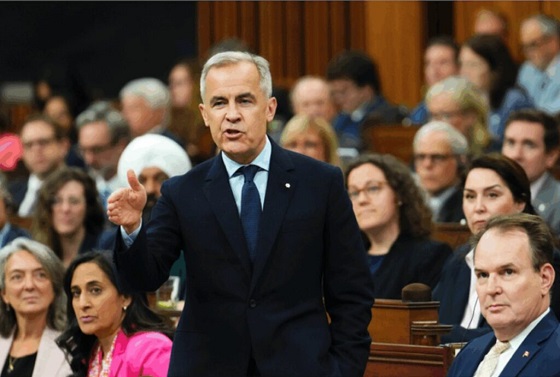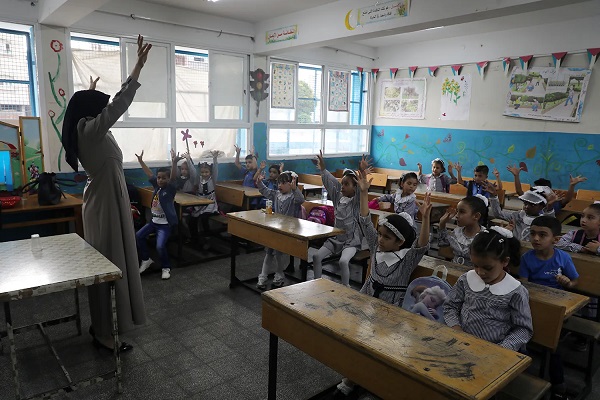Education
National awards for two teachers from Glendale Sciences and Technology School

Two teachers at Glendale Sciences and Technology School have been recognized at a national level for their excellence in teaching.
Ashton Lutz, Learning Facilitator, is one of 10 teachers across Canada to be awarded the 2022 Prime Minister’s Award for Teaching Excellence, while Amy Mathison, Grade 7/8 Math Teacher, is one of 25 teachers across Canada to be awarded the 2022 Certificate of Achievement for Teaching Excellence.
Both teachers were nominated by the school’s Principal Sandre Bevan, and Vice Principal Jeff Plackner.
“I feel very honoured and very grateful that I was nominated and selected for this award and that there is a belief in me by the people around me,” said Ashton, after learning she was a recipient. “I have a lot of gratitude and appreciation.”
In her new role as a Learning Facilitator, Ashton makes the connection between the Grade 2 curriculum and the daily lives of her students in order to fully engage each and every one of them. “What I really love about my role is that I get to connect with so many people and make a difference in so many lives,” she said. “When you come to school and a student has a great day, then you have a great day. I get to be a person in a child’s life that gets to make a true difference for them. It’s really rewarding.”
Amy added she also feels honoured to be recognized.

Amy Mathison (middle)
“I was not expecting this to happen. I was honoured to be nominated out of the many teachers in our Division, and then to receive the recognition feels amazing,” she said. “My parents are both teachers, so they were really proud.”
Both Ashton and Amy added they enjoy teaching at a school with a focus on Science, Technology, Engineering and Math (STEM).
“The role of science and technology is really important to engage learners and it’s really important that kids have that hands-on experience,” said Ashton. “With technology, I am able to pace instruction based on each student’s needs. For example, if a student is having trouble with a concept, they can get remediation at the same time that other students can move onto higher concepts.”
“The biggest thing about STEM learning is how engaged students are,” added Amy. “They are getting deeper learning with STEM. They get to do 3D printing and laser cutting – which are some pretty unique learning opportunities, and we have so much fun with it.”
Ashton’s interest in becoming a teacher stemmed from her time teaching swimming lessons. “I was taking college courses that didn’t allow me to teach swimming anymore and I really missed it,” she said. “I graduated with my combined Bachelor of Education and History degree from the University of Lethbridge in 2015 and moved to Red Deer, and I have been teaching elementary school ever since.”
For Amy, growing up in a household where both parents were teachers was inspiring. “At the dinner table they would always talk about teaching, and I started coaching sports when I was 16 and I loved it,” she said. “I went to school at the University of Lethbridge where I made the swim team and I was working on my degree in Kinesiology. A couple of years in, I applied to the Education program and got accepted. I completed a combined degree in Kinesiology and Education, and moved to Red Deer afterwards.”
Amy, who is in her ninth year of teaching, said she loves teaching in middle school. “I love the age of middle school kids – they are fun to teach, independent, and I appreciate their sense of humour,” she said. “I also love teaching at Glendale. We have some really great, supportive, and knowledgeable staff members. I enjoy the subjects and courses that I teach, as well as coaching volleyball here.”
Meanwhile, Ashton will fly to Ottawa next week to present with the other Teaching in Excellence Award recipients from across the country. “The presentation I have chosen is called Meeting Kids Where They Are At,” she said. “I have a true belief that everyone gets a seat at the table and it’s important that we meet their needs so they can be successful at school. So I’m going to be talking about what I feel my best practices are regarding that.”
Sandre added Glendale Sciences and Technology School is incredibly fortunate to have two phenomenal teachers.
“Our students, their parents, and our staff all benefit greatly from their respective efforts,” she said. “Ashton works hard to set students up for success in all aspects of their schooling. She has incredible insight about her students and works tirelessly to meet each of their individual needs. And Amy’s students truly believe that they can be successful in math, which is no easy task when a lot of people think that you are either good with numbers or you aren’t. We are so incredibly proud of them both.”
“The Board congratulates both Ashton and Amy on their national recognition,” said Board Chair Nicole Buchanan. “It is an honour for Red Deer Public to have dedicated and passionate teachers who go above and beyond every day for our students, ensuring there is excellence in teaching and learning in our classrooms.”
Ashton Lutz: Leadership in new learning
Certificate of Excellence Recipient

Glendale Sciences and Technology School
Grade 2, Language Arts, Math, Social Studies, Science, Art, P.E.
Amy Mathison: Leaving no child behind
Certificate of Achievement Recipient

Glendale Sciences and Technology School
Grade 7, Mathematics, Physical Education and Foods
Alberta
Schools should go back to basics to mitigate effects of AI

From the Fraser Institute
Odds are, you can’t tell whether this sentence was written by AI. Schools across Canada face the same problem. And happily, some are finding simple solutions.
Manitoba’s Division Scolaire Franco-Manitobaine recently issued new guidelines for teachers, to only assign optional homework and reading in grades Kindergarten to six, and limit homework in grades seven to 12. The reason? The proliferation of generative artificial intelligence (AI) chatbots such as ChatGPT make it very difficult for teachers, juggling a heavy workload, to discern genuine student work from AI-generated text. In fact, according to Division superintendent Alain Laberge, “Most of the [after-school assignment] submissions, we find, are coming from AI, to be quite honest.”
This problem isn’t limited to Manitoba, of course.
Two provincial doors down, in Alberta, new data analysis revealed that high school report card grades are rising while scores on provincewide assessments are not—particularly since 2022, the year ChatGPT was released. Report cards account for take-home work, while standardized tests are written in person, in the presence of teaching staff.
Specifically, from 2016 to 2019, the average standardized test score in Alberta across a range of subjects was 64 while the report card grade was 73.3—or 9.3 percentage points higher). From 2022 and 2024, the gap increased to 12.5 percentage points. (Data for 2020 and 2021 are unavailable due to COVID school closures.)
In lieu of take-home work, the Division Scolaire Franco-Manitobaine recommends nightly reading for students, which is a great idea. Having students read nightly doesn’t cost schools a dime but it’s strongly associated with improving academic outcomes.
According to a Programme for International Student Assessment (PISA) analysis of 174,000 student scores across 32 countries, the connection between daily reading and literacy was “moderately strong and meaningful,” and reading engagement affects reading achievement more than the socioeconomic status, gender or family structure of students.
All of this points to an undeniable shift in education—that is, teachers are losing a once-valuable tool (homework) and shifting more work back into the classroom. And while new technologies will continue to change the education landscape in heretofore unknown ways, one time-tested winning strategy is to go back to basics.
And some of “the basics” have slipped rapidly away. Some college students in elite universities arrive on campus never having read an entire book. Many university professors bemoan the newfound inability of students to write essays or deconstruct basic story components. Canada’s average PISA scores—a test of 15-year-olds in math, reading and science—have plummeted. In math, student test scores have dropped 35 points—the PISA equivalent of nearly two years of lost learning—in the last two decades. In reading, students have fallen about one year behind while science scores dropped moderately.
The decline in Canadian student achievement predates the widespread access of generative AI, but AI complicates the problem. Again, the solution needn’t be costly or complicated. There’s a reason why many tech CEOs famously send their children to screen-free schools. If technology is too tempting, in or outside of class, students should write with a pencil and paper. If ChatGPT is too hard to detect (and we know it is, because even AI often can’t accurately detect AI), in-class essays and assignments make sense.
And crucially, standardized tests provide the most reliable equitable measure of student progress, and if properly monitored, they’re AI-proof. Yet standardized testing is on the wane in Canada, thanks to long-standing attacks from teacher unions and other opponents, and despite broad support from parents. Now more than ever, parents and educators require reliable data to access the ability of students. Standardized testing varies widely among the provinces, but parents in every province should demand a strong standardized testing regime.
AI may be here to stay and it may play a large role in the future of education. But if schools deprive students of the ability to read books, structure clear sentences, correspond organically with other humans and complete their own work, they will do students no favours. The best way to ensure kids are “future ready”—to borrow a phrase oft-used to justify seesawing educational tech trends—is to school them in the basics.
Business
Why Does Canada “Lead” the World in Funding Racist Indoctrination?
-

 International2 days ago
International2 days agoBondi Beach Shows Why Self-Defense Is a Vital Right
-

 Business2 days ago
Business2 days agoOttawa Pretends To Pivot But Keeps Spending Like Trudeau
-

 Energy2 days ago
Energy2 days agoLiberals Twisted Themselves Into Pretzels Over Their Own Pipeline MOU
-

 Censorship Industrial Complex2 days ago
Censorship Industrial Complex2 days agoHow Wikipedia Got Captured: Leftist Editors & Foreign Influence On Internet’s Biggest Source of Info
-

 Crime1 day ago
Crime1 day agoBondi Beach Survivor Says Cops Prevented Her From Fighting Back Against Terrorists
-

 Automotive1 day ago
Automotive1 day agoFord’s EV Fiasco Fallout Hits Hard
-

 Crime2 days ago
Crime2 days agoThe Uncomfortable Demographics of Islamist Bloodshed—and Why “Islamophobia” Deflection Increases the Threat
-

 Frontier Centre for Public Policy18 hours ago
Frontier Centre for Public Policy18 hours agoCanada Lets Child-Porn Offenders Off Easy While Targeting Bible Believers












